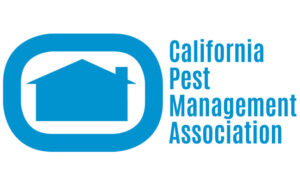
Dr. Austin Frishman, BCE-Emeritus
I never intended to become a teacher. My goal was to try to win a Nobel Prize via research in the field of entomology. Abruptly, in the second year of my doctoral graduate program at Purdue University, in West Lafayette, Ind., my major professor left the university and transferred to a college in a different region of the U.S.
To my surprise, the head of our department offered me my professor’s old job — and all the responsibilities that went with it. This included teaching.
Because I was married with one child and a second on the way, the opportunity was unbelievable. Without much preparation, I found myself teaching a few courses. The positive response from the students made me realize that this should be my career.
Years later, upon winning the first Teaching in Excellence Award at the State University of New York (SUNY) at Farmingdale, and later nominated for a Distinguished Professor Award, I wrote these words: The mediocre teacher tells, the good teacher explains, the superior teacher demonstrates, and the great teacher inspires!
A teacher’s responsibility
When I first started to teach, I understood it was my role not just to present information. It required kindling a spark within each student, a spark to want to learn. Once the flame starts, it becomes a roaring fire. A thirst for knowledge must be continually fed, especially by the teacher.
So many of my previous students caught that spark and wanted to learn. They contributed back to society with the knowledge they accumulated.
Upon graduation, I had two very different job offers. Either remain at Purdue University as an assistant professor. This included teaching, research and extension work. It was an opportunity to continue teaching at a prestigious institution. Go to SUNY at Farmingdale, N.Y., a two-year agricultural and technical campus where teaching was the sole responsibility.
I jumped at the SUNY job, even though there was a four-year college 10 miles down the road that paid double the salary.
As the famous baseball shortstop Alex “A-Rod” Rodriguez told Entrepreneur magazine in 2017, “I want entrepreneurs and partners with a Ph.D. I don’t mean from Harvard or Yale — I mean Poor, Hungry and Driven.”
From the moment I arrived on the SUNY campus, I hit the ground running. Instead of eating lunch in the faculty-only area, I sat with the students. I wanted to hear what their likes and dislikes were. Many were poor, hungry and driven to try to find what they wanted to do in life.
What follows is a list of some of the techniques that worked best for me in my quest to be the best that I could be.
Get to know your students
On the first day of each class, I spent a few minutes sharing who I was and a little about my life. Then I asked students to fill out
a paper with these questions:
- What grade do you expect to achieve in this class?
- What are your goals five and 10 years from now?
- What are your hobbies?
- What interests do you have?
With this information, I was able to get some ideas about each student. If a student wrote they liked to work with horses, for example, whenever I found a photo or article on horses, I cut it out and gave it to them.
Get students ready to learn
In the first laboratory session, each student was given a crayon, a piece of lined notebook paper and a large sheet of drawing paper. They were given the following instructions, one step at a time:
- Place the large paper on your desk.
- Place the smaller lined paper on top of the large paper.
- Draw a line across your lined paper that cuts one of the spaces to work with in half.
- Draw small circles in the smaller space.
- Draw big circles in the larger space.
- On the notebook paper, scribble over the entire page.
- Find a neighbor and draw on their paper.
- If capable, stand on the table and draw in the air.
- Sit back down.
They were then told, “You are now ready to learn and think. When your mind is bound by lines, so is your thinking.”
Let’s have fun while thinking and learning.
Get students ready to think independently
In my first Medical Entomology Lab, students were told there would be a quiz the following week and that at least two questions would come from articles posted on the bulletin board.
One of the articles was about a poisonous spit spider. The only way to identify it was to turn it over on its back, but it would spit and kill you. This bit of silliness was from Mad magazine but presented as a regular article on the board.
When I asked that question “How do you identify a poisonous spit spider” on the quiz, they all answered, “turn it over.” Because it was in print, they figured it was correct.
We had a discussion after I handed back the quizzes. I explained that what is in print, in textbooks and even what I say may be wrong. Question everything, especially these days where anyone can put anything online. Think.
Get students’ feedback
At the end of each semester, after their grades were turned in, I opened a sealed envelope that contained a questionnaire given to each student on the last day of class. The questions included:
- What was the best lecture you heard, and why?
- What was the worst lecture you heard, and why?
- How can I improve my lectures?
- What was the best laboratory you attended, and why?
- What was the worst laboratory you attended, and why?
- How can I improve the laboratories?
Each semester I read the responses and worked on making the worst ones better. Students can be very astute on pointing out what needs improvement in a teacher’s approach to teaching.
Get students’ respect
With small groups up to 24, I was able to create a group effect: All for one and one for all. They designed and made up their own class T-shirts. I also wore that T-shirt. To this day, I have photos of each class in their special shirts.
My office hours also included lunch time, where any student could come and eat with me and chat about anything. Administration found that open-door policy over lunch to be wrong. We did it anyway and just added one more office hour during the week.
As Frank Sinatra so appropriately said, “I did it my way!” Whether you are a teacher, parent, baseball player, artist or manager, you need to work to try to improve. Complacency in any position leads to mediocrity. I hope this article gives every manager who teaches a chance to evaluate themselves and a possible stimulus to keep on improving.
At 84, I am still working to be a better husband, father and grandfather. The spark to improve lives on.
<p>The post Teaching pest control: A critical career that constantly needs tweaking first appeared on Pest Management Professional.</p>
from Pest Management Professional https://www.mypmp.net/2024/08/22/teaching-pest-control-a-critical-career-that-constantly-needs-tweaking/
Sacramento CA



 Creating efficiencies for businesses and customers and driving value are what technology is all about. At the heart of FieldRoutes’ mission for its partners are making customers’ lives more efficient and helping them generate more revenue to drive greater value.
Creating efficiencies for businesses and customers and driving value are what technology is all about. At the heart of FieldRoutes’ mission for its partners are making customers’ lives more efficient and helping them generate more revenue to drive greater value.

















 At its general membership meeting on June 20, members of the
At its general membership meeting on June 20, members of the 